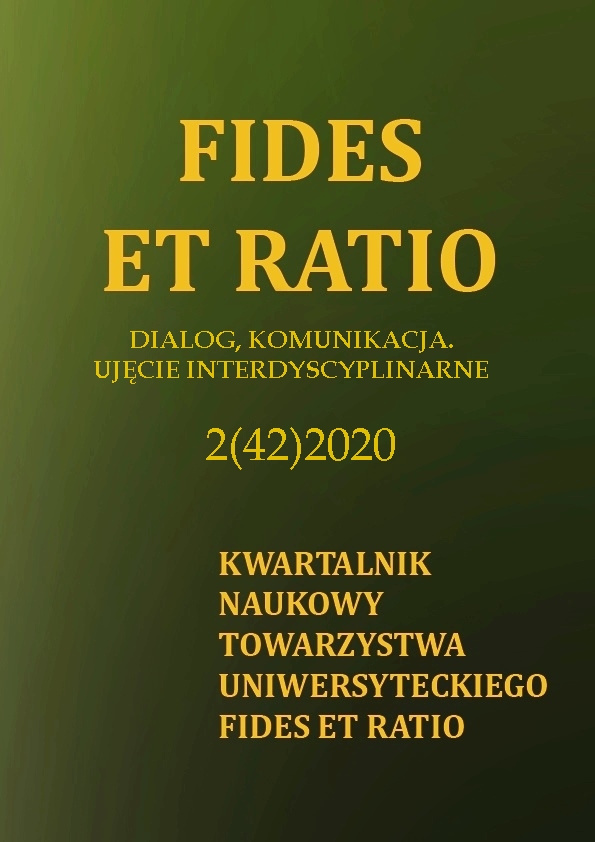Abstract
The aim of the present study was to investigate the psychometric properties of the Polish version of the Affectionate Communication Index (ACI). The study comprised 430 participants (61,63% females). Their age ranged from 18 to 36 years (M = 27,41; SD = 4,72). The following research tools were used: the Affectionate Communication Index (ACI), the Adult Siblings Relationship Questionnaire - short version (ASRQ-SF), the Empathic Sensitiveness Scale (ESS).
The results of exploratory factor analysis indicated the advisability of a two-factor solution in the Polish version of ACI, unlike in the original version, where a three-factor solution was implemented. The ACI factors showed highly reliable consistency, Cronbach’s α ranged from 0,89 to 0,93. In respect of affectionate communication some inter-gender differences were observed. The examined women obtained higher mean scores within the dimension of Support and nonverbal communication than men. To assess the external validity of ACI, the ASRQ and EES questionnaires were implemented. The obtained results confirm the external validity of the Polish adaptation of ACI.
Summing up, the results of the study suggest that the Polish version of ACI is a tool with good psychometric properties that allows a multidimensional measurement of the quality of affectionate communication in terms of Support and nonverbal communication and Verbal communication.
Key words: affectionate communication, measurement, empathy, adult sibling relationship
References
Bell, R. (2014). The Effect of Affectionate Communication on Relational Closeness in the Emerging Adult Sibling Relationship. Communication Studies Undergraduate Publications, Presentations and Projects. 61.http://pilotscholars.up.edu/cst_studpubs/61 [Available: 08.04.2020].
Drwal, R. Ł. (1990). Problems of cultural adaptation of questionnaires. In: A. Ciechanowicz (ed.). Cultural adaptation of tests. Warsaw: Polish Psychological Association.
Floyd, K. (2019). Affectionate communication in close relationships. Cambridge University Press.
Floyd, K. (2006). Human Affection Exchange: XII. Affectionate Communication is Associated with Diurnal Variation in Salivary Free Cortisol. Western Journal Of Communication,70(1), 47-63. doi:10.1080/10570310500506649.
Floyd, K. (2002). Human Affection Exchange: V. Attributes of the Highly Affectionate. Communication Quarterly, 50(2), 135-152.
Floyd, K., Morman, M. T. (1998). The measurement of Affectionate Communication. Communication Quarterly, 46(2), 144-162.
Floyd, K., Pauley, P. M., Hesse, C. (2010). State and Trait Affectionate Communication Buffer Adults' Stress Reactions. Communication Monographs, 77(4), 618-636. doi:10.1080/03637751.2010.498792.
Frydrychowicz, S. (2005). The influence of interpersonal communication on human development. Psychology of Language and Communication, 9, 69-82.
Harwas-Napierała, B. (2014). Specifics of interpersonal communication in the family understood as a system. W: I. Janicka, H. Liberska (edit.). Psychology of family (p. 47-72). Warszawa: PWN.
Kaźmierczak, M., Plopa, M., Retowski, S. (2007). Emotional Empathy Scale. Psychological Review, 50(1), 9-24.
Kaźmierczak M., Plopa M. (2008). Marriage Communication Questionnaire. Manual. Warszawa: Vizja Press.
Magnusson, D. (1981). Introduction to test theory. Warszawa: PWN.
Musiał, D. (2019). Role of communication in building relationships between adolescents and parents. Scientific Quarterly Fides Et Ratio, 38(2), 17-49. https://doi.org/10.34766/fetr.v2i38.65.
Rittenour, C. E., Myers, S. A., Brann, M. (2007). Commitment and Emotional Closeness in
the Sibling Relationship. Southern Communication Journal, 72(2), 169-183.doi:10.1080/10417940701316682.
Rostowska, T. (2008). Marriage, family, work and quality of life. Kraków: Impuls Publishers.
Stocker, C. M., Lanthier, R. P., Furman, W. (1997). Sibling relationships in early adulthood. Journal of Family Psychology, 11(2), 210-221.
Walęcka-Matyja, K. (2016). The relationships with siblings in early adulthood- analysis of conditions. Polish Psychological Forum 21(3), 341-363doi: 10.14656/pfp20160302.
